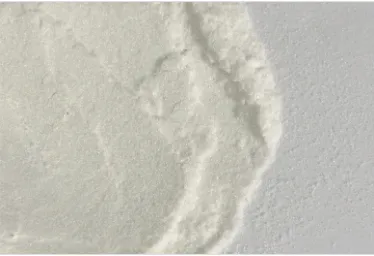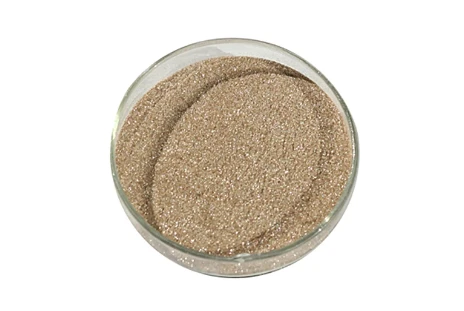Heat Reflective Interior Paint for Energy-Efficient Walls Advanced Heat Resistant Coating
- Introduction to heat reflective interior paint
and energy efficiency challenges - Technical breakthroughs in heat reflective paint for interior walls
- Manufacturer comparison and product performance analysis
- Customized solutions for specific interiors and climates
- Application case studies: practical benefits and outcomes
- Important considerations: selection, application, and sustainability
- Conclusion: Future outlook of heat reflective interior paint in interior design

(heat reflective interior paint)
Unlocking Comfort and Savings: The Role of Heat Reflective Interior Paint
In modern buildings, thermal comfort and energy efficiency are at the forefront of interior design concerns. With urban temperatures steadily rising due to climate change, the demand for innovative interior solutions is at an all-time high. According to the International Energy Agency, buildings account for approximately 30% of global energy consumption, much of which is for heating and cooling. Traditional wall paints merely serve decorative or protective purposes, while failing to address thermal performance. In this context, heat reflective interior paint emerges as a significant innovation. By reflecting infrared (IR) and ultraviolet (UV) radiation, these advanced coatings help maintain cooler internal temperatures, reducing dependency on air conditioning and supporting energy conservation goals. The global market for heat reflective coatings is expected to surpass $3.5 billion by 2027, which testifies to its growing adoption in both commercial and residential environments.
Technical Advances: How Heat Reflective Paint for Interior Walls Works
The development of heat reflective paint for interior walls hinges on nanotechnology and infrared reflective pigments. These paints contain specialized materials such as titanium dioxide, ceramic microspheres, or aluminum flakes, which dictate their thermal performance. When applied, they reflect a large proportion of the sun’s heat (up to 90% IR reflectivity, according to independent studies) and resist the absorption of solar energy through internal walls. This reduces the mean radiant temperature in rooms and promotes more stable ambient air conditions. Unlike conventional paints, which can reach surface temperatures above 50°C when exposed to sunlight, heat resistant paint for interior walls maintains an average surface temperature 10-15°C lower. Beyond thermal benefits, many formulations also enhance moisture resistance, mold prevention, and surface longevity, making them a comprehensive upgrade for interiors. Rigorous testing demonstrates improvements not just in laboratory conditions, but in real-world scenarios where reflective paints produce measurable declines in HVAC usage.
Manufacturer Comparison: Analyzing Performance and Value
With growing interest has come a variety of products from leading manufacturers. It is vital to distinguish between offerings to select the appropriate heat resistant paint for interior walls. The table below compares three prominent brands based on factors including reflectivity, durability, VOC content, and cost.
| Brand/Product | IR Reflectivity (%) | Expected Lifespan (years) | VOC Content (g/L) | Mold Resistance | Avg. Cost (per gallon) |
|---|---|---|---|---|---|
| ThermoCoat Ultra | 89 | 10 | 32 | Yes | $65 |
| ReflectaWall Pro | 85 | 8 | 42 | Yes | $58 |
| CoolShield Interior | 83 | 7 | 28 | No | $50 |
The decision between these manufacturers will depend on individual project needs. Higher reflectivity and longevity come with a premium, but lower VOC emissions and mold resistance may be essential for certain environments such as hospitals or schools.
Tailoring Solutions: Customizing Heat Reflective Interior Paint Applications
No two interiors are alike, and climate as well as building orientation significantly influence the efficacy of heat reflective paints. In southern and equatorial regions, for example, interior walls facing strong sunlight require maximum IR reflectivity to deliver desired thermal results. Conversely, in temperate climates, a balanced formulation that provides both insulation and breathability is preferred. Custom tinting can help match aesthetic needs without sacrificing performance, thanks to advances in reflective pigment technology. Consulting with manufacturers enables property owners to select paint grades tailored for high-humidity or low-light settings, or to pair with other energy efficiency features like triple glazing or smart thermostats. The integration of reflective coatings with existing wall assemblies also demands correct substrate preparation and expert application, ensuring long-term adhesion and durability. Hands-on technical support from leading brands can make all the difference in achieving the projected U-value reductions or surface temperature improvements.
Application Case Studies: Real-World Results of Heat Reflective Paints
The practical impact of heat reflective interior paint is best observed in deployment. In a 2022 retrofit project involving a 120,000-square-foot commercial building in Houston, reflective paints reduced the average interior wall temperature by 12°C compared to traditional latex coatings. Over a 12-month performance assessment, this translated to a 17% decrease in annual cooling loads—equivalent to an estimated $48,000 in energy cost savings per year. In a separate residential study, homeowners in Phoenix, Arizona, reported more consistent indoor comfort during extreme summer months after switching to reflective paint, with peak room temperatures dropping by 4-6°C and a perceptible 14% reduction in AC runtime. Notably, heritage sites in Europe have used low-VOC, heat reflective formulations to maintain indoor climate control without disrupting historic aesthetics or structural integrity. These cases highlight the capacity for heat reflective technology to deliver quantifiable returns in diverse architectural contexts.
Essential Factors: Choosing, Applying, and Ensuring Sustainability
Despite the clear benefits of heat reflective interior coatings, successful implementation depends on several critical factors. The quality of surface preparation—removing dust, repairing cracks, and using the proper primer—ensures maximum adhesion and performance. Professional application is recommended, as film thickness and curing time significantly impact the resulting reflectivity and lifespan. Additionally, sustainable choices matter; low-emission paints support indoor air quality, and water-based formulations minimize ecological footprint. Routine cleaning extends usable life, while spot checks help detect early signs of degradation. For larger commercial and institutional projects, manufacturers often provide Environmental Product Declarations (EPDs) to verify performance claims and sustainability metrics, reinforcing confidence in product stewardship. End-users should also consider manufacturer warranty terms and the availability of after-sales technical support to guarantee reliable, long-term benefits.
Redefining Interiors: The Future of Heat Reflective Interior Paint
As building owners and designers look toward future-proofing their projects, heat reflective interior paint stands out as a key component in sustainable, energy-smart environments. Growing regulatory focus on decarbonization and occupant well-being is accelerating the adoption of advanced reflective paints for interiors, alongside digital tools that simulate their impact during the design phase. Ongoing material innovation promises even greater efficacy, with next-generation formulations targeting not only heat but also airborne pollutants and microbial risks. With proven benefits in energy savings, comfort, and real-world durability, heat reflective interior paints are poised to become a foundational element of 21st-century building design, aligning aesthetics with performance and environmental stewardship.

(heat reflective interior paint)
FAQS on heat reflective interior paint
Q: What is heat reflective interior paint?
A: Heat reflective interior paint is a special coating designed to reflect infrared radiation, reducing heat absorption by interior walls. This keeps rooms cooler and more energy efficient. It is ideal for homes in warm climates.Q: Can heat reflective paint be used on all interior walls?
A: Yes, heat reflective paint for interior walls can be applied to most surfaces such as drywall, plaster, and concrete. Proper surface preparation ensures optimal performance. Always check manufacturer recommendations before application.Q: How does heat reflective interior paint differ from standard paint?
A: Heat reflective interior paint contains special pigments and additives that reflect heat, unlike standard paints. This results in lower interior temperatures. It also helps reduce air conditioning costs.Q: Is heat resistant paint for interior walls also heat reflective?
A: Heat resistant paint and heat reflective interior paint serve different purposes. Heat resistant paint is designed to withstand high temperatures, while heat reflective paint focuses on reflecting heat to keep interiors cool. Some products may offer both benefits, but always check product labels.Q: Will heat reflective interior paint affect my wall color options?
A: Heat reflective interior paint is available in a wide range of colors, similar to regular paints. However, lighter shades tend to offer better reflective properties. Always review available color choices with the manufacturer.-
Transforming Surfaces with Mica-Enhanced Paints in Coatings and DecorationNewsJul.02,2025
-
The Ultimate Guide to Mica-Based Luminous Colors with Pearlescent PigmentNewsJul.02,2025
-
The Critical Role of Mica in Industrial Applications in Welding and Oil FieldsNewsJul.02,2025
-
Revolutionizing Automotive Aesthetics with Modified Plastics Pearlescent PigmentsNewsJul.02,2025
-
The Secret with Mica Powder for Cosmetics Behind Radiant, Natural MakeupNewsJul.02,2025
-
Enhancing Performance in Polymer Applications with Mica Powder for RubberNewsJul.02,2025
Products categories









